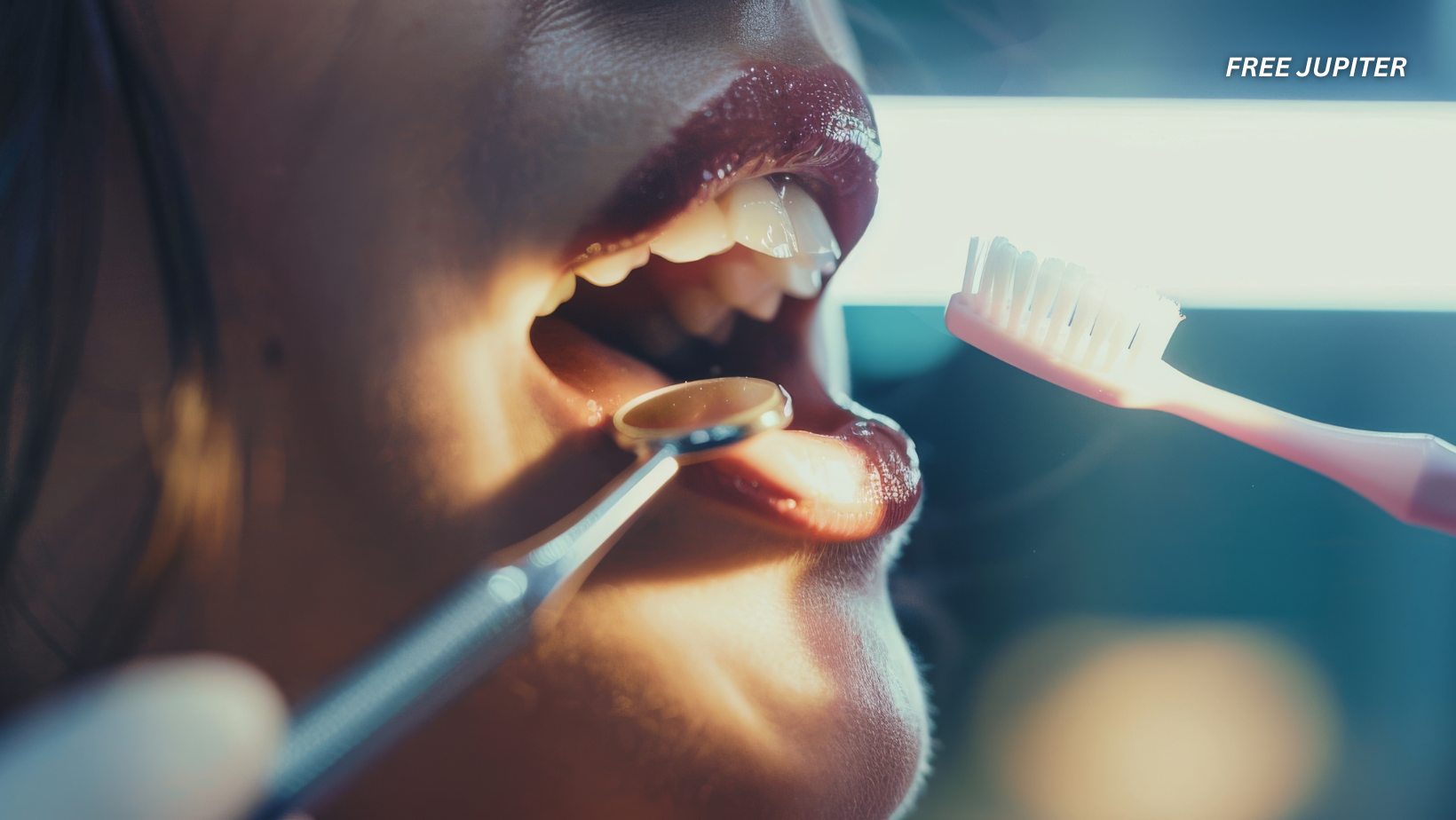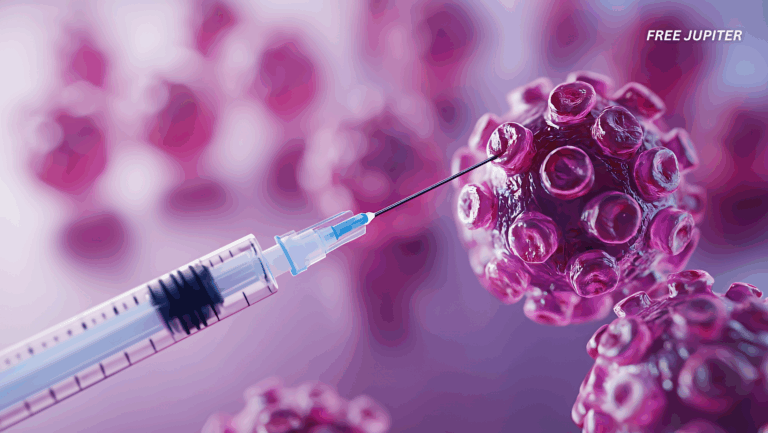Friendly Note: FreeJupiter.com is a place for curious minds and fun discoveries 🌌✨ But we’re a general information site, not a medical guide. Always double-check the facts—and when it comes to your health, check in with a professional too! 💙
Toothpaste has been around for centuries in one form or another. Ancient civilizations once used crushed shells, powdered bones, and even charcoal to scrub their teeth clean. Today, most people reach for minty gels packed with fluoride and whitening agents. But the next big leap in dental care may come from an unlikely source: human hair.
Yes, the same strands that we cut at the salon or shed daily without a second thought could one day help rebuild damaged teeth. Researchers at King’s College London have developed a toothpaste that uses keratin—a protein found in hair, nails, and even wool—to restore tooth enamel and prevent decay. If it works as expected, this discovery could change how we care for our teeth and perhaps even reduce the need for invasive dental procedures.
Why Enamel Matters So Much
To understand why this discovery feels revolutionary, it helps to know what enamel actually is.
Enamel is the hard outer shell of your teeth. It’s the body’s toughest substance—even harder than bone—and it protects the inner layers of the tooth from hot, cold, and acidic foods. The catch? Unlike skin or bone, enamel doesn’t regenerate. Once it’s gone, it’s gone for good.
This is where modern dentistry often steps in with fillings, resins, and crowns. These treatments are helpful, but they’re not perfect. They can wear down over time, sometimes contain less-than-friendly chemicals, and don’t always mimic the strength and resilience of natural enamel.
That’s why a toothpaste that can restore enamel, rather than just slow its loss, feels like such a breakthrough.
Read more: Scientists Create Plastic From Grapevine Waste That Breaks Down in Only 17 Days
The Secret Ingredient: Keratin
At first glance, the idea of brushing your teeth with something derived from hair or wool might sound unappealing. But it makes sense when you look at the science.
Keratin is a fibrous protein found not only in human hair but also in nails, feathers, hooves, and wool. It’s tough, resilient, and naturally designed to protect. Researchers discovered that when processed and combined with minerals found in saliva, keratin can form a dense layer over the tooth’s surface.
In laboratory experiments, this coating did two important things:
- It rebuilt structure – The keratin-based film resembled natural enamel, filling in microscopic gaps and reinforcing weakened areas.
- It sealed nerve channels – Teeth have tiny tubules that, when exposed, can send sharp pain signals (the reason ice cream sometimes feels like lightning in your jaw). Keratin closed these pathways, reducing sensitivity.
In other words, keratin doesn’t just sit on top of the tooth—it actively bonds with it, working with the body’s natural chemistry to build protection where it’s needed.
How It Differs from Fluoride
Most toothpaste today relies on fluoride. And for good reason—fluoride helps harden enamel, making it more resistant to acids and bacteria. Communities that added fluoride to drinking water saw massive drops in cavities over the decades.
But fluoride has limits. It can’t regrow enamel once it’s lost; it only strengthens what’s left. Keratin-based toothpaste goes a step further by potentially restoring enamel-like material to the tooth.
This means that instead of slowing the decline, we may soon be able to reverse it. Dentists wouldn’t just be fighting decay—they’d be helping teeth heal themselves.
Why Sustainability Matters
Another fascinating aspect of this innovation is its source material. Human hair and wool, both considered biological waste, are abundant and renewable. Every haircut, every wool shearing, produces material that usually gets discarded.
By transforming these leftovers into a medical resource, researchers are creating a solution that is not only effective but also eco-friendly. Traditional dental resins and synthetic materials often come with environmental costs, both in manufacturing and disposal. A hair-based alternative offers a sustainable option that fits into a growing global push for “green” science.
This aligns with other movements in medicine and biotechnology where waste products are being reimagined as valuable resources. For instance, shells from seafood industries are being repurposed into biodegradable plastics, and agricultural byproducts are finding their way into renewable packaging. Hair-based toothpaste fits neatly into this bigger picture of circular innovation.
When Could It Be Available?
The researchers behind this discovery estimate that keratin-based toothpaste could be on the market within the next two years. It may first appear in two forms:
- A daily-use toothpaste – for people to use at home just like their current fluoride toothpaste.
- A concentrated gel treatment – likely offered by dentists for patients with more severe enamel loss or sensitivity.
Of course, much depends on further testing, safety trials, and regulatory approval. But the early results are promising enough that excitement is building.
Read more: Humpback Whales Keep Saving Animals From Orcas—And No One Knows Why
The Bigger Picture: Enamel Erosion as a Global Problem
Enamel erosion isn’t just a minor inconvenience; it’s a global health issue. Billions of people worldwide experience cavities, tooth sensitivity, and enamel wear. Causes range from sugary and acidic diets to the natural aging process. Even healthy habits—like drinking citrus juice or carbonated water—can gradually weaken enamel.
Once enamel wears away, teeth become more vulnerable to pain, decay, and eventually tooth loss. For many people, especially in countries without widespread dental care, this can mean lifelong discomfort and serious health consequences.
A simple, widely available toothpaste that can rebuild enamel could help prevent these problems on a massive scale, potentially reducing the need for costly dental treatments.
A Glimpse at the Future of Dentistry
This isn’t the first time researchers have tried to find ways to regrow enamel. Other experimental treatments include peptides (small proteins that trigger mineral growth) and bioactive glasses that release enamel-strengthening minerals when applied to teeth.
What sets keratin apart is its combination of effectiveness, sustainability, and accessibility. It takes something the world already produces in abundance and transforms it into a medical tool. That’s a recipe for widespread impact.
If successful, this could mark a shift in dentistry from “repair and replace” to “restore and regenerate.” Imagine a world where cavities don’t automatically mean drills and fillings, but instead a few months of brushing with a restorative toothpaste.
A Quirky but Promising Path
Of course, the idea of brushing your teeth with something derived from hair may raise eyebrows. It’s a little quirky, perhaps even unsettling at first. But so were many medical breakthroughs. Penicillin, after all, came from mold. Vaccines often use weakened viruses to protect against disease. What feels strange at first can quickly become normal once its benefits are clear.
If this toothpaste delivers on its promise, people may soon look back and wonder why anyone ever doubted it. After all, hair already protects us in so many ways—it keeps us warm, shields our skin, and even acts as a natural barrier against the elements. Perhaps it was only a matter of time before it found its way into protecting our teeth as well.
Read more: Scientists Discover Natural Molecule That Wipes Out 90% of Cavity-Causing Plaque
Final Thoughts
Toothpaste made from human hair might sound like science fiction, but it could be brushing its way into reality in just a few years. By using keratin, the same protein that strengthens hair and nails, scientists have discovered a method to restore enamel, reduce sensitivity, and prevent decay.
This isn’t just a dental breakthrough—it’s a story about innovation, sustainability, and rethinking what we consider waste. If successful, this quirky idea could reshape how we care for our teeth, making smiles stronger, healthier, and more resilient—one strand of hair at a time.
Disclaimer: The information in this article is for general informational purposes only and is not medical advice. We are not doctors, and this website is run as a family hobby project. Always consult a qualified healthcare professional before making decisions about your health. Please fact-check any claims and use this content as a starting point, not a substitute for professional guidance.










